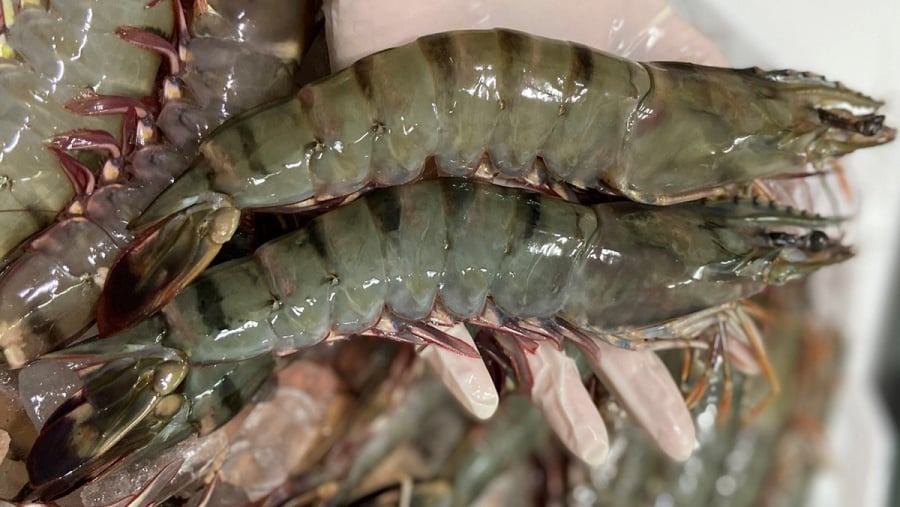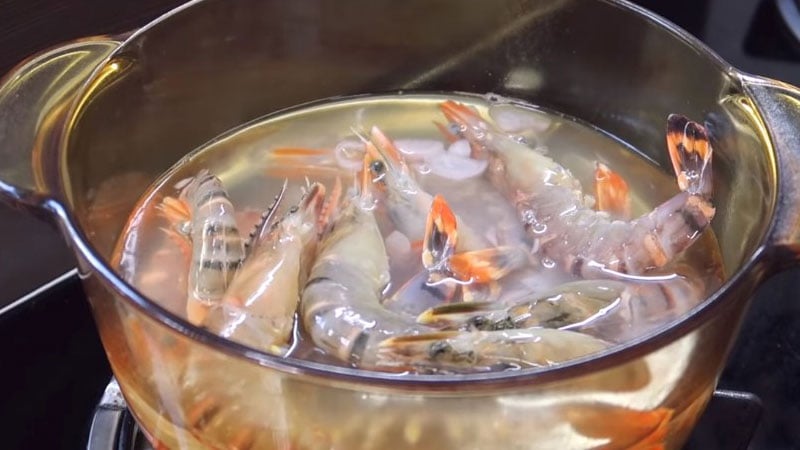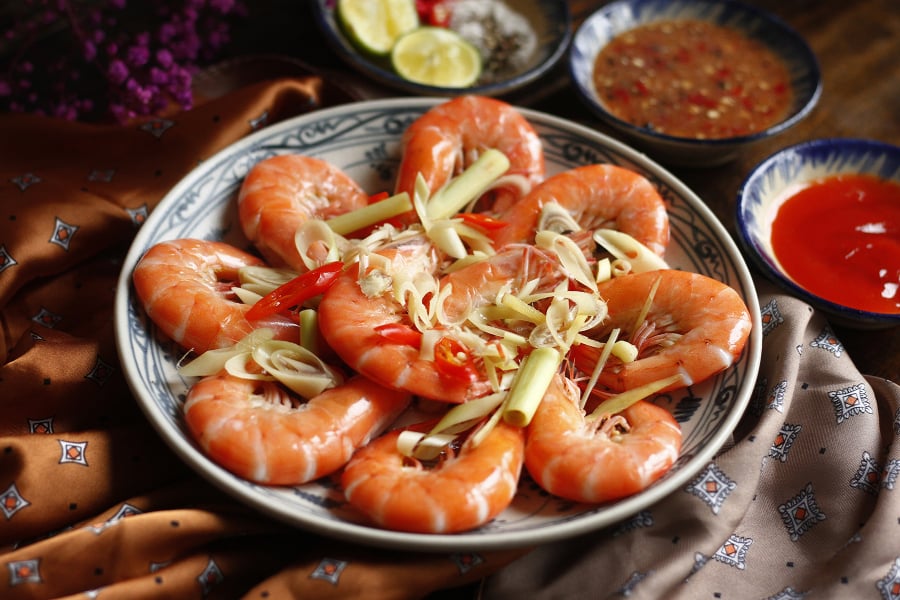How to Select Fresh and Delicious Shrimp
For the best boiled shrimp, choose live shrimp that are still swimming; this ensures optimal freshness. The shells of fresh shrimp are clear and firm, and their heads and bodies should be intact, with all whiskers, legs, and claws present and not discolored.
If you’re opting for frozen shrimp, avoid those with overly stiff shells as they may have been treated with sodium bisulfite, a bleaching agent that removes pigmentation. Also, steer clear of shrimp with odd odors, broken heads, or black discoloration.

Preparing the Shrimp
Once you’ve purchased your shrimp, rinse them thoroughly and trim their long whiskers for a neater appearance. Use a skewer to remove the vein or intestinal tract from the shrimp’s back. After cleaning, marinate the shrimp in half a cup of white wine, which helps neutralize any fishy odor and enhances the color when boiled.
Boiling the Shrimp Perfectly
To ensure your boiled shrimp are delicious and perfectly cooked, pay attention to the cooking process, including spices, water temperature, and boiling time, to prevent overcooking, which can make the shrimp dry and less sweet.
Spices for Boiling Shrimp
Enhance the flavor of your boiled shrimp by adding some crushed ginger and lemongrass to the pot. These ingredients not only add aroma but also help reduce any fishy odor. You can also season with a pinch of salt or seasoning powder to taste.
Using Hot Water for Boiling
Always use hot water for boiling shrimp. Avoid putting shrimp directly into cold water, as this extends the cooking time and can make the shrimp bland and mushy. Starting with hot water helps retain the shrimp’s sweetness and effectively removes any fishy smell.

Boiling Time
The boiling time depends on the size of the shrimp. Generally, shrimp are done when their shells turn reddish, they curl up slightly, and their tails touch their heads. Overboiling will make the shrimp curl up tightly and become dry and less sweet.
Once the shrimp are cooked, remove them from the hot water and let them drain before plating. Placing them directly on a plate with residual hot water can make them soggy.

Chilling the Shrimp in Ice Water
If you’re using the shrimp for dishes like spring rolls, vermicelli, or salads, you can chill them in ice-cold water immediately after boiling. However, if you plan to eat them right away, they’re best enjoyed hot to savor their sweetness and avoid any fishy taste.
3 Mistakes That Will Rob You of Shrimp’s Nutrition: Especially This Second One
“Common Shrimp Consumption Mistakes: Are You Putting Your Health at Risk?”
A delicious seafood treat, shrimp is a popular choice for many, but are you aware of the potential health hazards associated with improper consumption? It’s time to shed light on the common mistakes people make when eating shrimp and how they can impact your well-being.



































